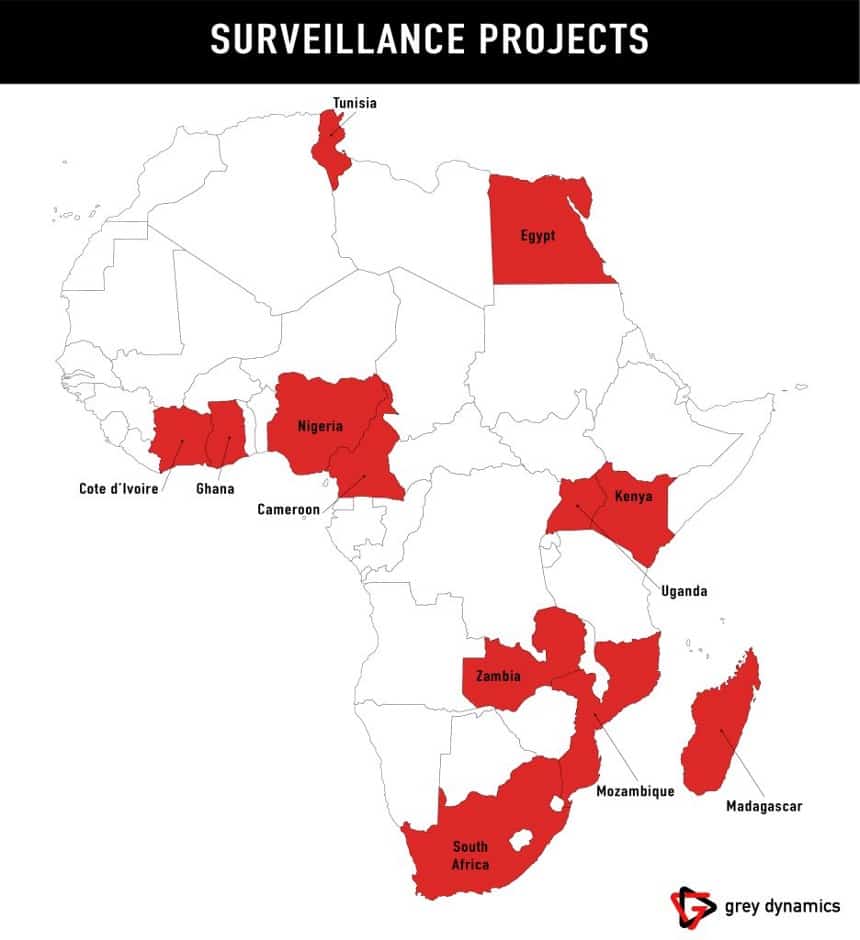
The Xeuliang Project: Key Findings
- The Xeuliang (Sharp Eyes) Surveillance Project, first piloted in 2013 and officially announced in 2015, aimed to achieve 100% coverage of all public spaces by 2020. It is likely that this target is close to completion, but having no blind spots is highly unlikely. While the internalised fear of being watched serves as a tool for behavioural control
- The Xeuliang Project divides a territory into a grid, granting citizens access to expanding local camera networks. These cameras are monitored by facial recognition and artificial intelligence. Local citizens become a part of “grid management”, subjectively spying on neighbours and reporting to officials
- Focusing on rural areas, the Xeuliang Project expands on urban-focused Skynet, Golden Shield, and Safe Cities surveillance projects. Digital surveillance combined with big data utilises algorithms to assess mobile data, financial transactions, and travel purchases to analyse and “predict” behaviour
Mao’s Sharp Eyes
The Xeuliang Project “Sharp Eyes”, is a reference to Mao Zedong, stating “the people have sharp eyes” in terms of looking out for neighbours not adhering to communist values. “Sharp Eyes” witnessed citizens crowdfunding money to install cameras in their communities, in addition to the huge government rollout. Official papers released in 2015 envisioned a national video surveillance network in 2020 that is “omnipresent, fully networked, always working and fully controllable”. This Grey Dynamics intelligence article analyses the Xeuliang Project and its relation to the larger scope of China’s state surveillance programmes.

Remote Control in Hand, Safety in Heart
In 2013, the city of Linyi, Shandong Province, the Pingyi County attempting to overcome lack of rural surveillance, initiated the installation of tens of thousands of security cameras. 82% of Pingyi’s 1.06 million population reside in rural areas. At least six monitoring probes were installed even in the most remote villages. Before becoming an official Sharp Eyes demonstration city, “All Households are Monitors” was launched in 2015. This project allowed citizens to upgrade cable boxes for direct access to surveillance feeds, incorporating citizens into China’s state surveillance programme. The slogan for the project: “Remote control in hand, safety in heart”, befitting the ability to report crimes at the press of a button on their remote.
Baojia System
The roots of Sharp Eyes can be identified in the grid management system during the Song dynasty’s Baojia system. This was a system of communal self-policing that witnessed neighbours monitoring neighbour’s behaviour for moral conduct. This system enabled control over civil society with less official presence. During the Mao Zedong leadership, cities were also split into grids consisting of socialist work units. The units would report the behaviour of neighbours in return for benefits from the state. The Sharp Eyes project is a digital reform of traditional methods of communal self-policing, expanding China’s state surveillance programme network.
Sharp Eyes
China’s 5-year plan for Sharp Eyes was announced in 2015, with the target of 100% coverage of public spaces by 2020. By 2017, the central government had spent 3.1 billion yuan on the project. In 2018, Zhoukou city spent more on surveillance networks than education. In Xiqiao, the city was divided into “core”, “key”, and “auxiliary” grids. The cameras focused on the “four basic needs” of human life: transportation, clothing, food, and housing. Utilising facial recognition and artificial intelligence algorithms, the information would be relayed back into the wider monitoring systems. In Xinjiang, China’s state surveillance programme coincided with the Integrated Joint Operations Platform (IJOP).
The IJOP monitored mobile data and activity, identifying the use of WhatsApp and VPNs, seen as ‘suspicious’. Integrating citizens into surveillance increases the “sharp eyes” on suspicious activity. For the persecuted Uighur Muslims population, fear of neighbours along with fear of the state becomes reality. A major motivation for China’s state surveillance programme is social management, and Sharp Eyes is one cog in the surveillance machine. It is not limited to rural areas and is integrated with projects in major cities such as Beijing and Guangzhou.
Big Brother
In Xinjiang and Tibet, armed police booths are a common sight on street corners, while in Beijing, 850,000 ‘informants’ patrol the streets. The physical presence combined with the expansion of China’s state surveillance programme instils the fear of always being watched, influencing the behaviour of a population. The Golden Shield Project was created in 2003, responsible for China’s strict internet censorship laws.
The project incorporated “a vast network of surveillance infrastructure… which monitors Chinese citizens online and offline”. Databases that included 96% of Chinese citizens were part of this. China’s state surveillance programme was expanded further with Safe Cities and SkyNet. Safe Cities enabled facial recognition algorithms, artificial software, and the Internet of Things (IoT) to achieve unprecedented surveillance measures.

The Safe Cities initiative is also being adopted by countries in Africa with partnership with China’s Huawei. SkyNet is responsible for the A.I. element of the surveillance, providing real-time information on anyone caught on camera.

The Xeuliang Project
While China’s state surveillance programmes can target crime, traffic, and infrastructure issues, the consequences for privacy and human rights are vast. As approximately 2 million Uighur Muslims and ethnic minorities are in concentration camps, the ‘Big Brother’ initiatives indicate a worrying future of surveillance in China. These programmes make political dissidents significantly easier to identify, and with the integration of ‘predictive’ A.I., may witness ‘predictive’ action from the state to intervene. A troubling reality is the willingness to expand the networks by citizens, citing security concerns. In terms of social management, this expansion of grid management is becoming fully operational.
Image: Teslarati (link)
